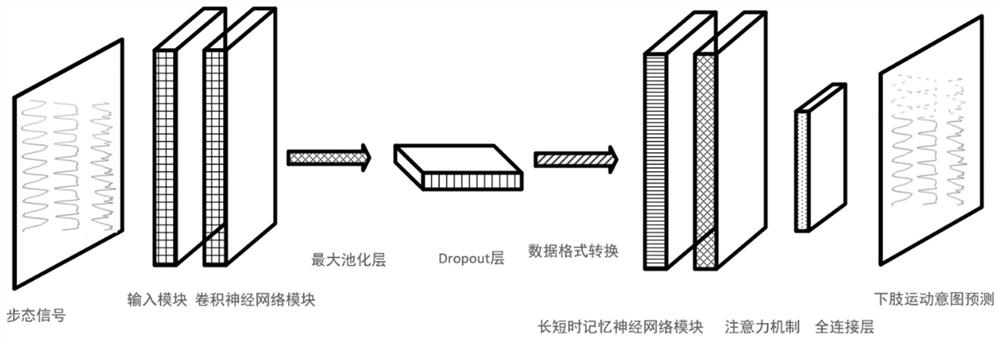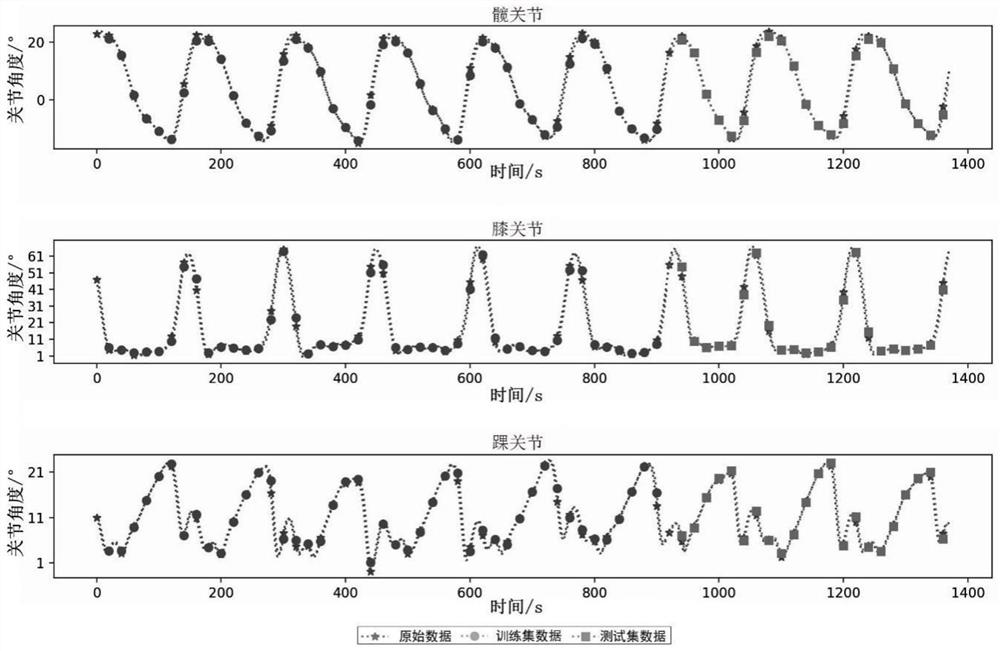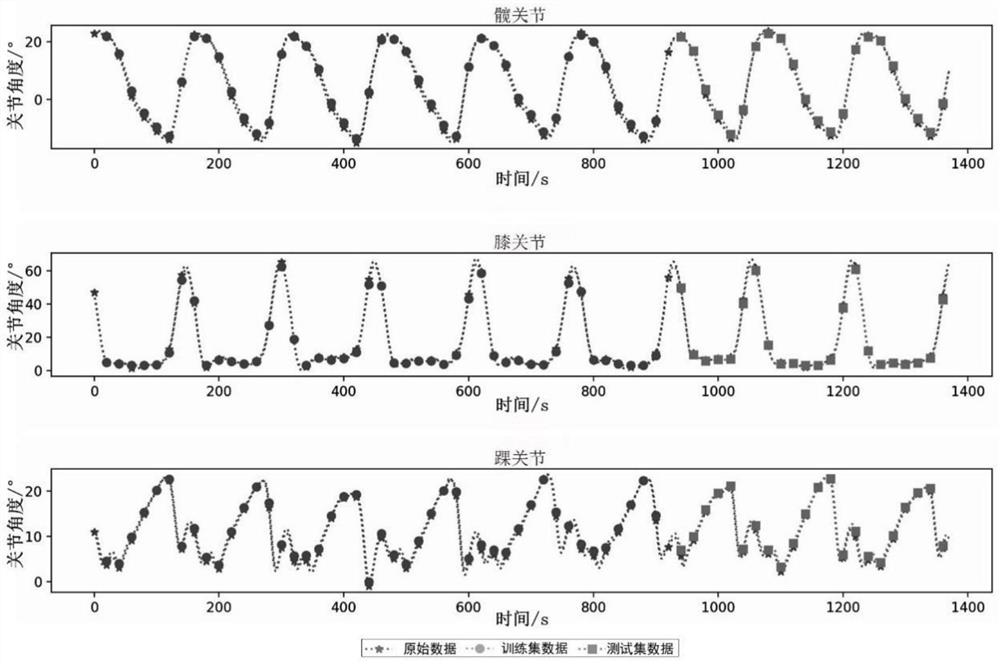Lower limb motion intention prediction method based on attention mechanism
A technology of motion intention and prediction method, applied in neural learning methods, computer parts, instruments, etc., can solve the problems of poor gait signal feature extraction effect and low prediction accuracy, so as to solve long-term dependence, improve prediction efficiency, reduce The effect of complexity
- Summary
- Abstract
- Description
- Claims
- Application Information
AI Technical Summary
Problems solved by technology
Method used
Image
Examples
Embodiment
[0037] The lower limb movement intention prediction method based on attention mechanism of the present embodiment (method for short, see Figure 1-4 ), including the following steps:
[0038] Step 1. Use the VICON MX 3D gait system to collect the gait signal of a subject during the lower limb movement in the horizontal walking state. The gait signal includes the three joint angles of the hip joint, knee joint and ankle joint. A total of Obtain continuous 1363s gait signals; normalize the gait signals, and use 70% of the normalized gait signals as training set data, and the remaining 30% as test set data, that is, the gait signals of the first 914s as The training set data, the gait signal of the last 449s is used as the test set data, in which the training set data is a 914×3 matrix, the test set data is a 449×3 matrix, and the training set data is reorganized into a 914×3×1 matrix, The test set data is reorganized into a 449×3×1 matrix, which is the data format allowed by th...
PUM
 Login to View More
Login to View More Abstract
Description
Claims
Application Information
 Login to View More
Login to View More - R&D
- Intellectual Property
- Life Sciences
- Materials
- Tech Scout
- Unparalleled Data Quality
- Higher Quality Content
- 60% Fewer Hallucinations
Browse by: Latest US Patents, China's latest patents, Technical Efficacy Thesaurus, Application Domain, Technology Topic, Popular Technical Reports.
© 2025 PatSnap. All rights reserved.Legal|Privacy policy|Modern Slavery Act Transparency Statement|Sitemap|About US| Contact US: help@patsnap.com



